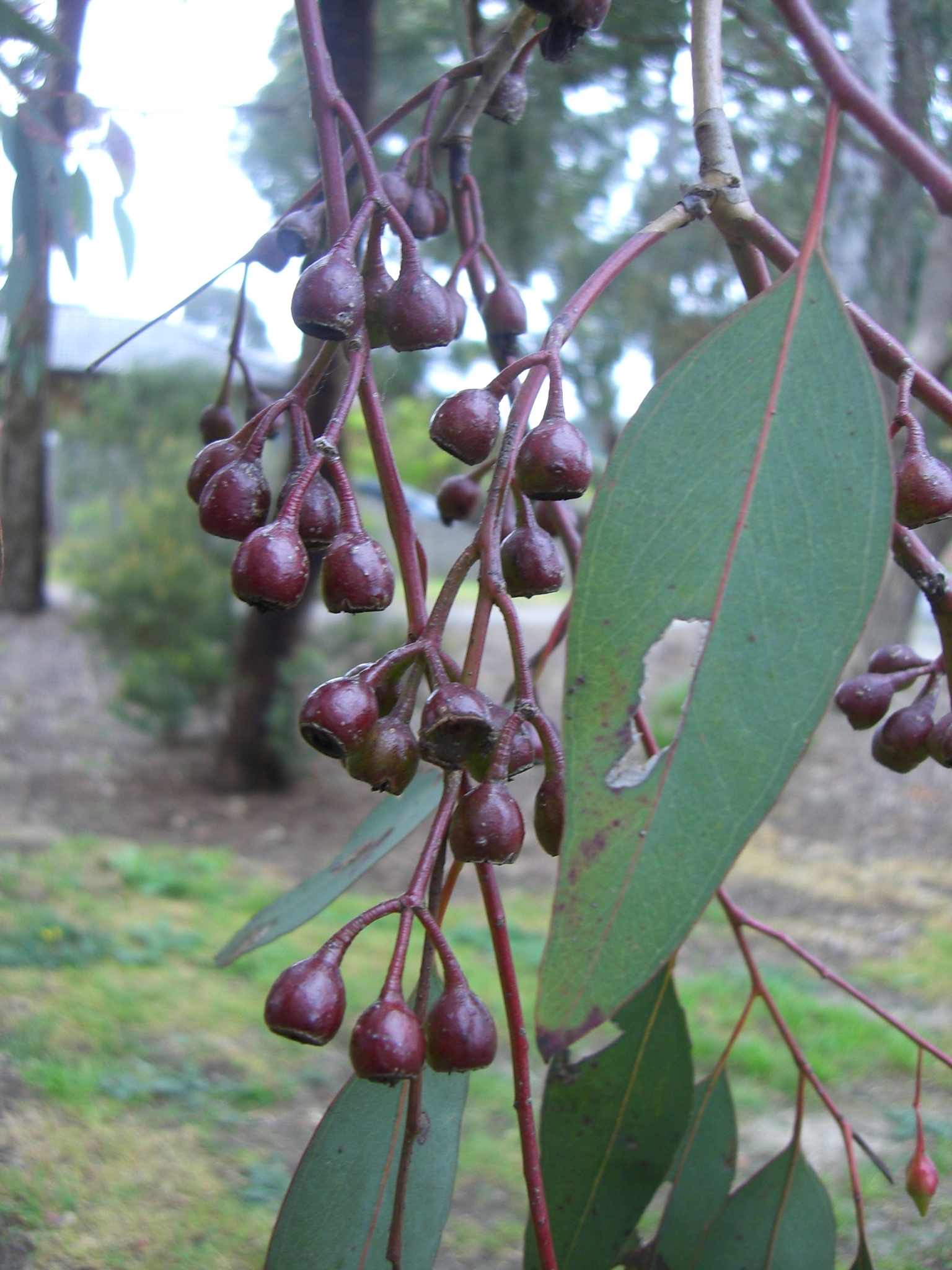
Tree or mallee. Bark rough and fibrous or peeling at the base, smooth and blue, yellow or grey above. Juvenile leaves opposite, broadly lanceolate to ovate. Adult leaves lanceolate or narrow lanceolate, green to waxy-blue. Leaf stalk cylindrical. Flowers in 3s, white, pink or red, common stalk cylindrical, individual flowers long-stalked with long-beaked caps; June-Sept. Fruits hemispherical to ovoid or bell-shaped.
A fourth subsp. petiolaris from SA is rare in cultivation.
subsp. leucoxylon, Yellow Gum (Blue Gum). Tree to mostly 15 m tall. Juvenile leaves ovate to broadly lanceolate, stalkless. Leaf blade mostly 10-13 cm long, 1.5-2.5 cm wide. Leaf stalk 1-2 cm long. Fruits ovoid to roundish, 7-14 mm long, 8-13 mm wide.
subsp. megalocarpa Boland from coastal SE SA (incl. Kangaroo Island). Specimens VIC: Benalla (Gds).
SA (incl. Kangaroo Island), Vic, NSW.
Flowers long-stalked and with long caps, differing from the closely related E. melliodora and E. sideroxylon in having flowers in 3s.
Source: (2002). Eucalyptus. In: . Horticultural Flora of South-eastern Australia. Volume 3. Flowering plants. Dicotyledons. Part 2. The identification of garden and cultivated plants. University of New South Wales Press.

A pink-flowered form, also known in horticulture as e. leucoxylon var. rosea or var. macrocarpa-rosea or (dwarf). This variant breeds true except for flower colour and is morphologically distinct. Its origins are obscure and it can have no formal botanical status - even though it is one of the most widely planted and ornamental of the eucalypts. It has been confused with subsp. megalocarpa and subsp. petiolaris.However, the slender leaves less than 10 cm long and relatively large fruits with the sunken style base and alternate, hardly stalked juvenile leaves are distinctive. If a parent population could be found in the wild it could be given subspecific status.Until then it is best referred to as 'Rosea' or e. leucoxylon (pink-flowered).